
Wang Lingji was a Kuomintang general from Sichuan. In 1913, he fought against the Beiyang government and the Chinese Workers' and Peasants' Red Army. He commanded the 30th Army Group from April 1938 to October 1945. He fought against the Imperial Japanese Army in Hubei; Jiangxi and Hunan.
Gao Shuxun sometimes written Kao Shu-hsun, was a KMT general from Zhili Province.

Wang Yitang was a politician and military leader in the Qing Dynasty and Republic of China. He belonged to the Anhui clique and formed the Anfu Club (安福俱樂部). Later he became an important politician in the Provisional Government of the Republic of China and the Reorganized National Government of the Republic of China. His former name was Zhiyang (志洋) and his courtesy names were Shenwu (慎吾) and Shengong (什公). Later, his name was changed to Geng (賡) while his courtesy name was changed to Yitang (一堂). He was also known by his art name Yitang (揖唐). He was born in Hefei, Anhui.

Wen Shizhen, also known as S. T. Wen, was a politician and diplomat in the Republic of China. He was Mayor of Tianjin during the Provisional Government of the Republic of China and the Wang Jingwei regime. His courtesy name was Peishan (佩珊). He was born in Tianjin.

He Fenglin was a general in the Republic of China. He belonged to the Anhui clique and the Fengtian clique.
Kou Yingjie was a military leader in the Republic of China. He belonged to the Zhili clique. In the end, he participated to the Wang Jingwei regime. His courtesy name was Bichen (弼臣). There are two theories about his birthplace, one was Yanggu, Shandong, the other was Lijin, Shandong.
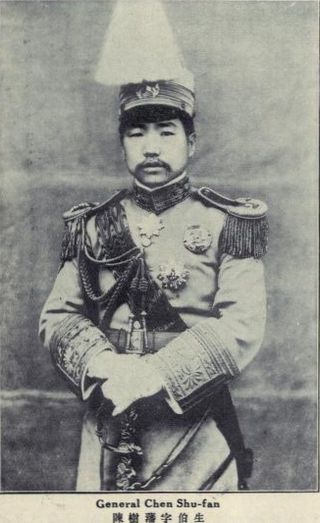
Chen Shufan was a Chinese general active during the early Republican period in China. He was a prominent general of the Anhui Clique and won the Order of Rank and Merit and Order of Wen-Hu.

Ku Cheng-kang or Gu Zhenggang was a Chinese politician, scholar and ranking member of the Kuomintang in service to the Republic of China.
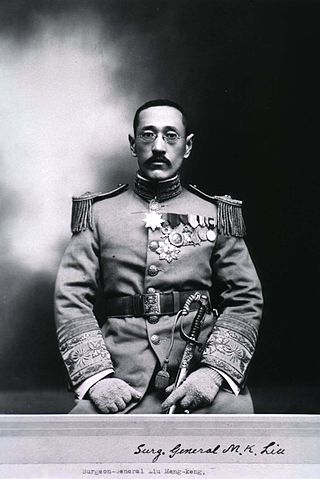
Liu Menggeng was a politician and physician of the Republic of China and Manchukuo. He was born in Qinhuangdao, Hebei.

Li Yuan was a politician of the Republic of China and later Manchukuo.
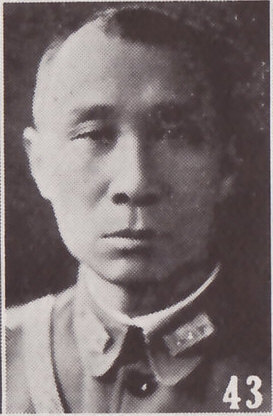
He Chengjun was a Kuomintang politician and military officer of the Republic of China. He was born in Hubei. He was graduate of the Imperial Japanese Army Academy. As a member of the Tongmenghui, he took part in the Xinhai Revolution. He was briefly mayor of Beijing after its capture by the National Revolutionary Army during the Northern Expedition. In the Second Sino-Japanese War, he was governor of his home province and defended it against the advancing Imperial Japanese Army. After the defeat of the Kuomintang in the Chinese Civil War, he went to Hong Kong and in 1951 arrived in Taiwan. He died in Taipei at the age of 78.

Chang Yin-wu ; 1891 – May 27, 1949), or Chang Yen-wu, was a Kuomintang educator and politician of the Republic of China. He was born in Baoding, Hebei. He was a graduate of the Baoding Military Academy. He was the 17th Republican mayor of Peiping. After the capture of Beijing by the forces of the Communist Party of China, he was arrested by the People's Liberation Army in February 1949 and jailed. He died three months later in prison.

Wang Hu ; 1865 – April 25, 1933) was a politician of the Qing dynasty and the Republic of China.He was born in Baoding, Hebei. He was the 6th Republic-era mayor of Beijing. He was affiliated with the Zhili clique of the Beiyang government.

He Qigong (1898–1955) was a Chinese educator and Kuomintang politician of the Republic of China. He was born in Anqing, Anhui. He was the 16th Republic-era mayor of Beijing.
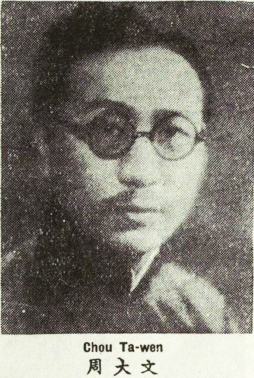
Zhou Dawen (1895–1971) was a politician of the Republic of China. He was born in Wuxi, Jiangsu. He was aligned with the Fengtian clique before joining the Nationalist government. He was the 19th mayor of Beijing.

Yuan Liang (1882–1953) was a Kuomintang politician of the Republic of China. He was born in Hangzhou, Zhejiang. He was the 21st mayor of Beijing.
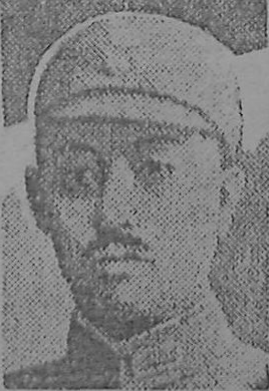
Qin Dechun was a military officer and politician of the Republic of China. He was born in Shandong. He graduated from the Baoding Military Academy in Baoding, Hebei. He was a member of the Zhili clique before going over to the Nationalist Government. He fought in the Second Sino-Japanese War, and was the acting commander of the 29th Army during the Marco Polo Bridge Incident. After the defeat of the Kuomintang in the Chinese Civil War he went to Taiwan. He died in Taipei at the age of 71.

Xie Shouchang known by his courtesy name Xie Guansheng (謝冠生) was a Chinese jurist who served as Minister of Justice from 1937 to 1948. After the government of the Republic of China moved to Taiwan, Xie was President of the Judicial Yuan 1958 to 1971.

Liu Shangqing was a Chinese politician. He was also known by the courtesy name Haiquan (海泉).

Hung Lan-yu was a Chinese politician.







































































































































